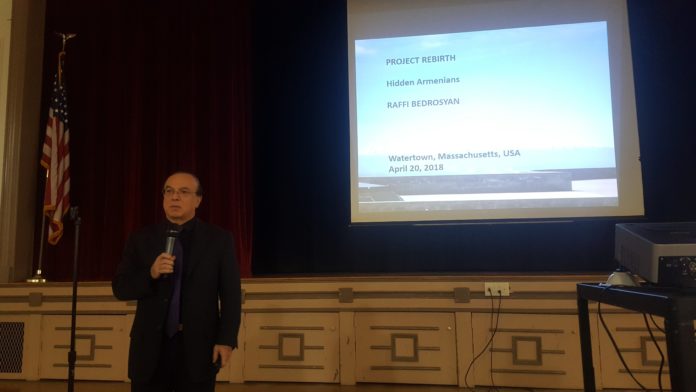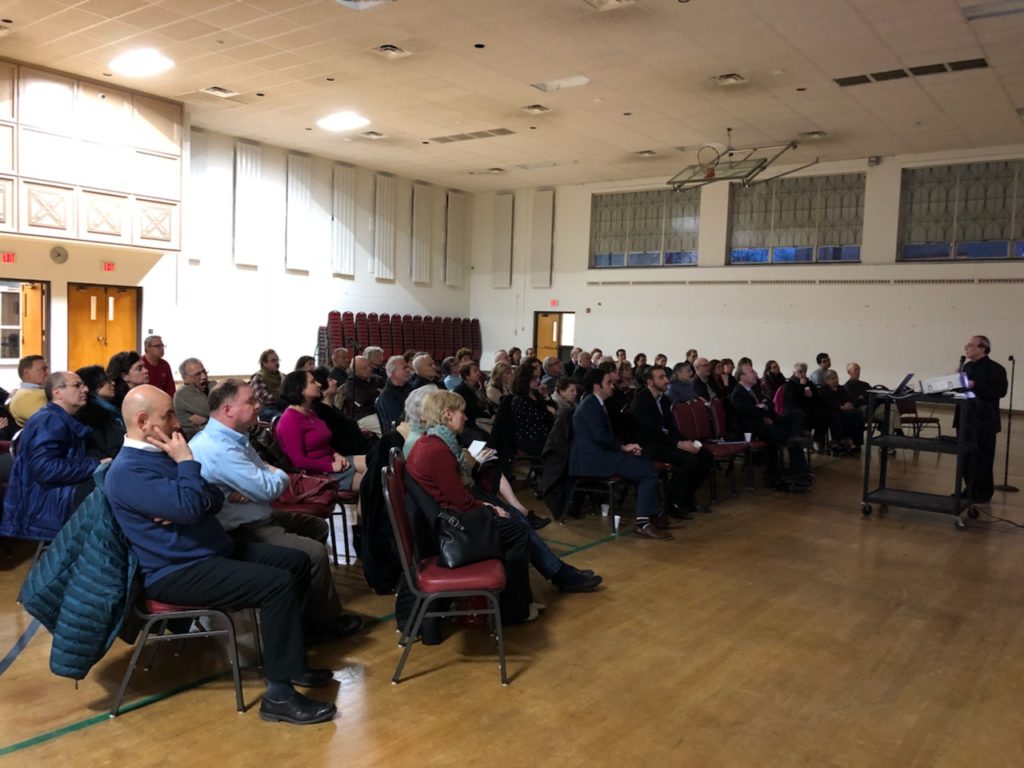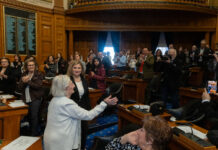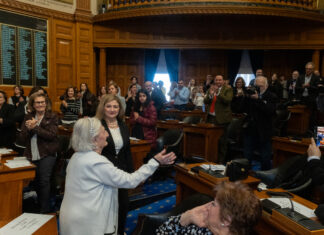WATERTOWN — For more than an hour and a half on Friday, April 20, speaker Raffi Bedrosyan rattled off stories and statistics about “hidden” Armenians in Turkey today, accompanied by slides, keeping the audience at St. James Armenian Church’s Keljik Hall entranced.
Bedrosyan spoke at a program sponsored jointly by the Tekeyan Cultural Association and St. James Armenian Church. He had come to Boston to be the keynote speaker at the Massachusetts State House annual Armenian Genocide commemoration, which had taken place earlier in the day.
Bedrosyan started on the subject by saying, “My late friend, Hrant Dink, kept telling me they kept talking about the dead and the gone, but it’s time to speak of the living.”
Bedrosyan said regretfully that of his three close friends in Turkey, two, Hrant Dink and Tahir Elci, were killed, while a third, Osman Kavala, is in prison. Elci was a prominent Kurdish human rights attorney whom the Turkish military killed in 2015 while he was speaking about Kurdish rights at a press conference. Kavala is a proponent of Genocide recognition and Kurdish rights.
Bedrosyan said that the Armenian population globally comprises four sources: Armenia, Artsakh, the diaspora and Turkey. In the latter, he estimates, there are about 2 million Armenians who either know and keep quiet about their identity or who are still unaware they are at least part Armenian.
Tracing back the story, he showed slides of “lucky” orphans who survived the Armenian Genocide and were forcibly Turkified and Islamized in the many state-run orphanages.










